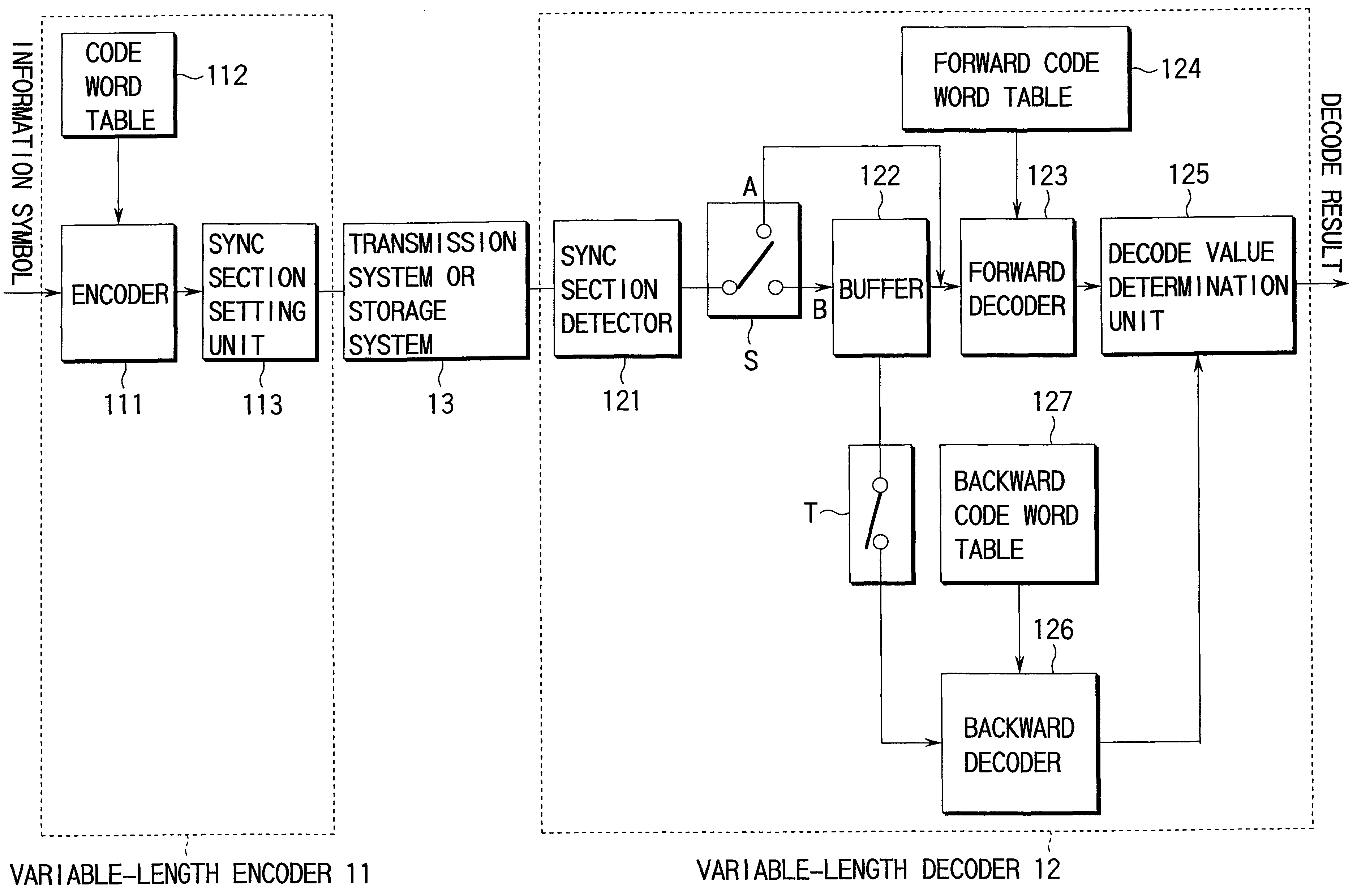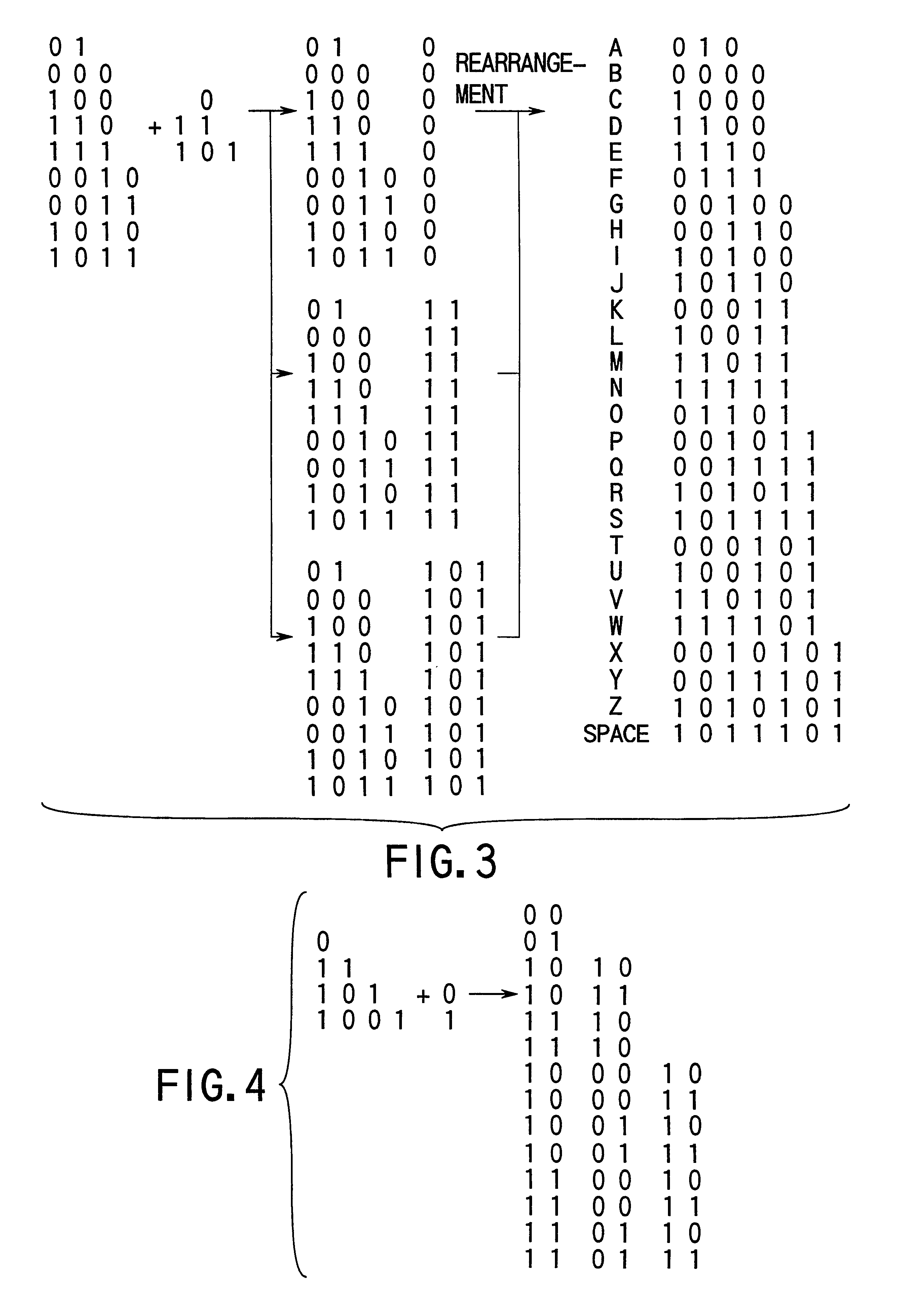Variable length decoder and decoding method
a decoder and variable length technology, applied in the field of variable length decoder and decoder, can solve the problem of reducing the possibility of erroneously decoding an incorrect code word as a correct code word, and achieve the effect of reducing the influence of the frame error
- Summary
- Abstract
- Description
- Claims
- Application Information
AI Technical Summary
Benefits of technology
Problems solved by technology
Method used
Image
Examples
first embodiment
(First Embodiment)
FIG. 5 shows the arrangement of a variable-length encoding / decoding apparatus according to an embodiment of the present invention. This variable-length encoding / decoding apparatus generates variable-length-encoded data and decodes it. A sync code is periodically inserted in variable-length-encoded data. As a variable length code, a reversible code (Reversible VLC) that can be decoded in the two directions, i.e., the forward and backward directions, like those described above, is used.
As shown in FIG. 5, a variable-length encoding apparatus 11 is constituted by an encoder 111, a coded word table 112, and a sync section setting unit 113. The coded word table 112 stores variable length code words prepared in correspondence with information symbols in accordance with the reversible code word forming methods described with reference to FIGS. 1 to 4. The coded word table 112 also stores reversible codes, which can be decoded in both the forward and backward directions, i...
second embodiment
(Second Embodiment)
FIG. 10 shows the arrangement of a variable-length encoding / decoding apparatus for video signals according to the second embodiment of the present invention.
This video encoding / decoding apparatus is made up of a video encoder 21, a video decoder 22, and a transmission system or storage system 23.
In the video encoder 21, the data encoded by a data source encoder 202 is divided into upper layer data and lower layer data by a video multiplexer 203, and the respective data are variable-length encoded. These upper and lower layer data are multiplexed, and sync section setting and the like are performed. The resultant data is smoothed by a transmission buffer 204. The resultant data is then sent as encoded data to the transmission system or storage system 23. An encoding control unit 201 controls the data source encoder 202 and the video multiplexer 203 in consideration of the buffer amount of the transmission buffer 204.
In the video decoder 22, the encoded data from th...
third embodiment
(Third Embodiment)
An error range estimating method which can be applied to decode value determination processing in the first and second embodiments will be described as the third embodiment of the present invention.
FIG. 51 is a block diagram showing the arrangement of a variable-length decoder 109 according to the third embodiment of the present invention.
The variable-length decoder 109 is designed to decode encoded data containing variable length codes in units of sync sections as in the first and second embodiments, and has the same basic arrangement as that of the first and second embodiments.
In the variable-length decoder 109, when encoded data is a variable length code that can be decoded only in the forward direction, a switch S is connected to A, and normal forward decoding is performed by a forward decoder 104. The encoded data decoded by the forward decoder 104 is sent to a decode value determination unit 105.
When the encoded data is a reversible variable length code that ...
PUM
 Login to View More
Login to View More Abstract
Description
Claims
Application Information
 Login to View More
Login to View More - R&D
- Intellectual Property
- Life Sciences
- Materials
- Tech Scout
- Unparalleled Data Quality
- Higher Quality Content
- 60% Fewer Hallucinations
Browse by: Latest US Patents, China's latest patents, Technical Efficacy Thesaurus, Application Domain, Technology Topic, Popular Technical Reports.
© 2025 PatSnap. All rights reserved.Legal|Privacy policy|Modern Slavery Act Transparency Statement|Sitemap|About US| Contact US: help@patsnap.com



